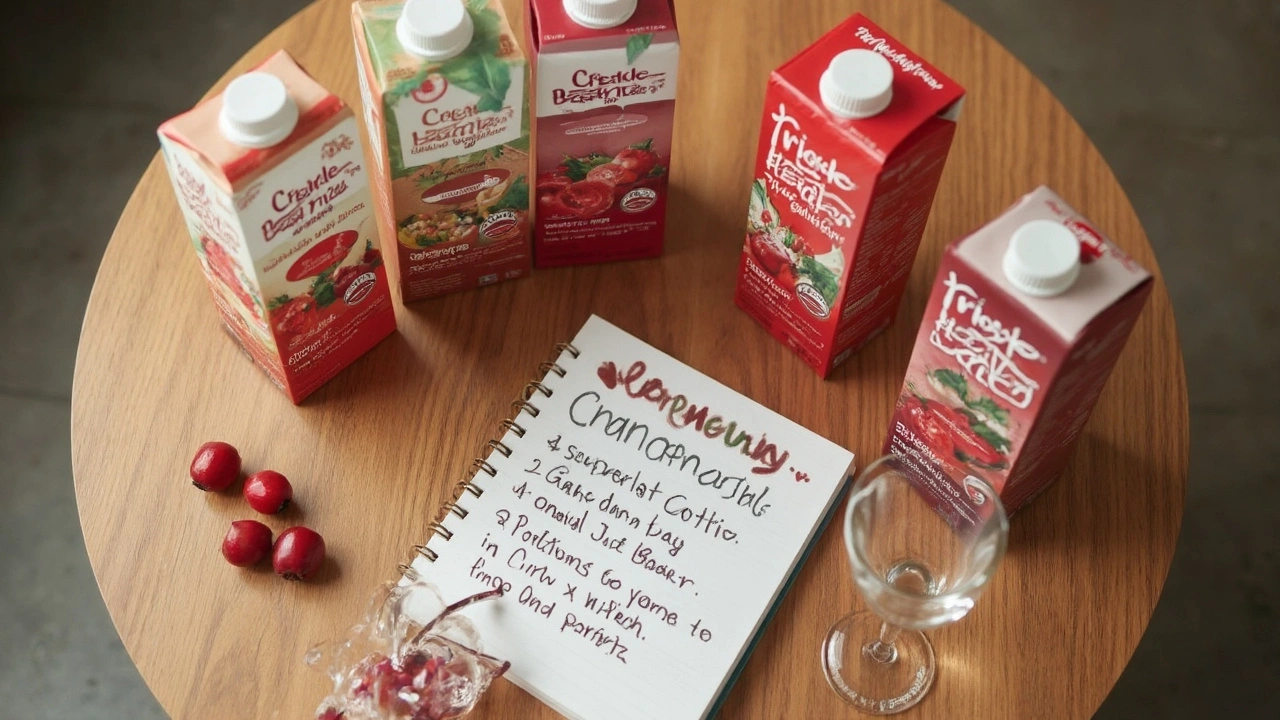You know that little bottle of cranberry juice sitting on the grocery shelf, that tart red drink people love or hate? For decades, it’s been hyped as the go-to secret for anyone who’s battled a bladder infection. But does cranberry juice really work, or is it just a rumor that never goes away? While half the world claims it’s a miracle cure, the other half rolls their eyes—so what’s the truth? Science has something to say, and it’s not always what you’d expect.
Why Bladder Infections Are So Annoying (And How Cranberry Juice Got Involved)
Bladder infections—let’s call them by their real name, urinary tract infections or UTIs—are shockingly common, especially in women. In fact, one in two women will get a UTI at least once in her life, according to the National Institute of Diabetes and Digestive and Kidney Diseases. Men aren’t off the hook, either, but women’s shorter urethra gives bacteria an easier path to the bladder, making us ground zero for these stubborn infections.
So where does cranberry juice come into the picture? The story goes back to Indigenous North American communities, who used cranberries for everything from food to medicine. Fast forward to the early 20th century, doctors noticed that cranberry juice made urine more acidic in test tubes, and everyone guessed this might fight off bacteria. By the 1960s, cranberry juice was the drink everyone reached for at the first sign of burning or urgency.
But now we know the truth is a bit messier. Acidifying your urine doesn’t explain the whole cranberry effect. Instead, the real magic (if there is any) seems to come from stuff called proanthocyanidins, or PACs—fancy plant compounds that live in the skin of real cranberries. They’re the things that might stop a certain kind of bacteria (E. coli, the main troublemaker in UTIs) from clinging to the bladder wall. If the bacteria can’t stick, they can’t grow, and your body can flush them out more easily.
Here’s the twist: not all cranberry juice is created equal. Commercial off-the-shelf drinks are often loaded with sugar and contain little actual PACs. Many are mostly water, sugar, and maybe five percent juice. The kind of PAC concentration needed to actually make a difference—that’s a lot higher than the usual glass of juice provides. Some studies even say you’d have to drink up to a liter a day of real, 100% unsweetened cranberry juice to get enough PACs, but let’s be honest—you’d probably tap out by your second glass. It’s R-rated sour.
So why does the myth persist? Maybe it’s wishful thinking. Maybe people like to feel in control, like there’s something easy they can do at home to beat infections. And for a few, it might actually help. The placebo effect is real—believing you’re doing something to help can make you feel better, whether the juice is pulling the strings or not.

What Science Actually Says About Cranberry Juice and UTIs
If you’ve ever searched the internet after a UTI scare, you know the advice goes wild: chug cranberry juice, pop cranberry pills, eat dried cranberries, switch to water, or just call your doctor ASAP. Let’s break down what real science says, minus all the wishful thinking and bold claims.
First off, not all research agrees. Earlier studies were small and often didn’t separate people with recurring infections from those who just happened to have one. Many used cranberry juice cocktails, which have different levels of the good stuff (PACs) than pure concentrate or supplements. Some groups got a sugar hit; others got bitter, barely palatable drinks.
The best and most recent studies, like the big 2023 meta-analysis from the Cochrane Database, sifted through all the noise. They pooled data from thousands of people in well-run clinical trials. What did they find? Cranberry juice probably helps reduce the risk of recurring UTIs in women and children who are prone to infections. The reduction isn’t huge, but it’s real enough to make a difference for folks who get UTIs all the time. For people who only get a UTI once in a blue moon or for older adults in nursing homes, the benefits aren’t so clear-cut.
Here’s a quick look at some detailed data:
| Study / Review | Population | Cranberry Format | UTI Reduction | Notes |
|---|---|---|---|---|
| Jepson et al. (2023), Cochrane | Women with recurrent UTIs | Juice, capsules, tablets | 26% less risk | Best effect in those with repeated infections |
| NIH study (2022) | Children with UTI history | Juice, extract | Proven reduction | No effect in all children, only those with history |
| Cochrane Review (2020) | Adult men and women | Varied | No clear effect in rare UTIs | May not work in everyone |
| JAMA (2016) | Nursing home women | Capsules | No significant change | No clear benefit in elderly group |
So, who should try cranberry? Honestly, if you’re someone haunted by UTIs every few months, you might be one of the lucky ones who gets a bit of protection from regular cranberry—in juice or pill form. If you’ve only had one or two in your life, there’s probably not much reason to make your grocery basket overflow with cranberries.
The form you pick matters, too. Capsules often pack more PACs in a tiny dose (if you get brands that list their PAC content—look for 36-72mg PACs per day). Check your pills before you buy, since many don’t actually contain the good stuff. Juice is only effective if it’s pure, unsweetened, and not just colored sugar water—something you’ll find only in small bottles from specialty stores, not the giant jugs with cartoon cranberries on the label.
If you like lists, here’s what you want to remember:
- Get the highest PAC content you can afford—36-72mg per day is the typical target that studies used.
- Pills are usually easier to take than juice (unless you love that sour taste).
- If using juice, go for 100% pure and unsweetened. The sweet cranberry cocktail is mostly sugar.
- No study shows cranberry juice can cure an active infection—antibiotics still win for that.
- If you’re diabetic or watching sugar intake, pills are a safer bet than juice.
- Anyone with rare kidney conditions (like oxalate kidney stones) should check with their doctor, since cranberries have lots of natural oxalates.
- Watch out for side effects: too much cranberry (especially supplements) can upset your stomach.
One thing science hasn’t pinned down is how much help you’ll actually feel. Some people swear by cranberry and say their infections drop from every month to only twice a year; others notice no difference. If you’re in the latter group, don’t beat yourself up—genetics, hydration, hormones, and even sex habits make a big difference in UTI risk.

Smart Tips and Common Mistakes: How to Actually Use Cranberry Juice (If At All)
If you’re dead set on giving cranberry a try, do it right. Skip the sugar bombs and those shelf-stable cartons with more apple juice than berry. Read the label. If the calorie count is through the roof, that’s a dead giveaway that you’re drinking the juice equivalent of a gummy bear. You need PACs, not empty calories.
Let’s get practical: try to take your cranberry dose at the same time each day—think of it like brushing your teeth rather than bingeing before a UTI hits. Consistency seems to matter more than how much you guzzle at once. And yes, hydration helps: washing out the bladder regularly has the strongest support from every medical study, cranberry or not.
- Drink plenty of water daily, not just when you feel symptoms. More fluids = more flushing.
- Don’t depend on cranberry when you actually get an infection. Any signs of burning or fever mean it’s time to call your healthcare provider. Untreated UTIs can turn dangerous—infecting your kidneys or even triggering sepsis (yes, really).
- Pair cranberry with smart bathroom habits: wipe front to back, pee after sex, and avoid scented feminine hygiene products.
- If you’re prone to yeast infections, watch your sugar intake from juice. Sugar can feed yeast, which is not what you want.
- If you’re on blood thinners like warfarin, talk to your doctor first—cranberries can bump up the effects of certain meds.
- Talk with your doctor before starting supplements if you’re pregnant or have kidney issues. Better safe than sorry.
You might be surprised to learn that some doctors now recommend cranberry products to kids with frequent UTIs, but in child-size doses. And if your elderly relative still swears by his or her glass of juice, there’s no harm in letting them enjoy it—as long as it’s not loaded with sugar.
One last tip? Don’t get discouraged if cranberry doesn’t work miracles for you. UTIs are stubborn, and everyone’s body reacts differently to prevention tricks. If you’ve tried everything and infections keep showing up, don’t suffer in silence. Ask your doctor about other options—sometimes low-dose antibiotics, hormone creams, or even changing birth control methods make a bigger difference for chronic UTI sufferers than any natural remedy ever could.
If you want something to stick on your fridge, remember this: Cranberry juice isn’t magic—but, for the right person, the right dose, and the right reason, it’s worth a shot (and most pleas to “just drink more water” aren’t wrong either). When in doubt, choose what really works for your body and your lifestyle. Science will keep searching for that perfect, easy answer. Until then, a bit of tartness in your daily drink might just keep the pesky UTI away.
